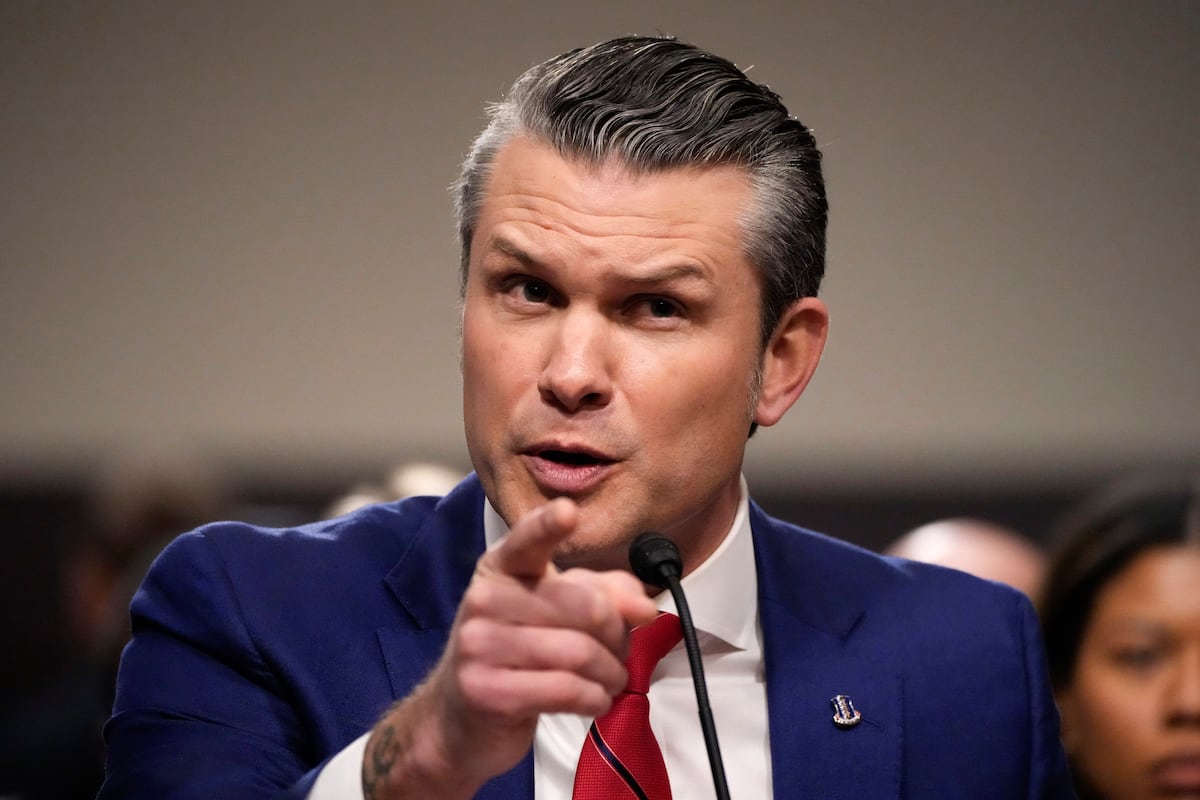A groundbreaking new export regulation aims to keep some AI models and related chips out of adversaries’ hands while easing their sale to friendly nations, Biden officials said Sunday, a day before its official release. But America’s top chipmaker castigated the new rule as “sweeping overreach” that would stifle innovation.
The so-called Interim Final Rule on Artificial Intelligence Diffusion seeks to streamline licensing hurdles for chip orders, bolster U.S. AI leadership, and help allied and partner nations understand how they can benefit from AI, officials said.
One senior White House official told reporters that U.S. leadership in AI, particularly in modeling, is fragile.
“We’re in a critical window right now, particularly vis-à-vis China. If you think about where our models are today relative to PRC models, the estimates range from [the United States] being six to 18 months ahead right now. And so every minute counts from our perspective,” the official said.
The rule’s most notable provision limits the export of “advanced closed-weight AI systems”: those whose operation or training require staggering amounts of mathematical calculations and whose models have not been made public. Such systems can be used in cyber operations or to develop chemical weapons. The controls initially apply to model weights exceeding 100 septillion computational operations, with exceptions for entities headquartered in the United States or allied nations.
Open-weight models—those whose weights are publicly available—remain exempt from restrictions, a bid to support open research while preventing advanced closed systems from falling into adversarial hands.
The rule introduces six mechanisms to change how AI-enabling technologies may be exported. It divides the world’s nations into three groups: allies and friendly ones with easier access, potentially hostile ones with drastically limited access, and the largest group subject to some new restrictions.
The rule’s provisions include:
- Streamlining low-risk exports: Orders of less than about 1,700 GPU chips (or their computational equivalent) are exempt from licensing requirements, accelerating shipments for universities, medical institutions, and research organizations.
- Universal Verified End User and National Verified End User programs: Trusted entities with UVEU status may deploy up to 7% of global AI capacity; those with NVEU status may purchase up to 320,000 GPUs over two years.
- Caps for non-trusted entities: Organizations outside the trusted framework may purchase no more than 50,000 GPUs per country.
- Model weight limits: Restrictions on transferring model weights for advanced closed-weight models, combined with new security protocols, to prevent misuse by adversaries while allowing secure deployment by allies.
- Doubling chip caps for allies: Nations that align their export control, clean energy, and technology security policies with the U.S. can double their chip quotas, potentially fostering deeper international collaboration.
- Loopholes, closed: Building on the semiconductor controls of 2022 and 2023, the new rule addresses smuggling and closes export loopholes that adversaries have previously exploited.
One senior White House official told reporters on Sunday that the new rules will make it easier for U.S. tech firms to do business with companies and countries that have encountered bureaucratic licensing delays.
“I think many countries in that category have experienced very significant delays in getting licenses for chips that they would like to have. You know, whether that’s 64 chips or, you know, 2,000 chips. And so I think what this is going to do is, at the lower end, it’s going to remove the licensing requirements.”
Of course, the rule comes as the Biden administration prepares to leave office on January 20. The incoming administration of President-elect Donald Trump is likely to take a different view, given that Trump has promised to rescind other pieces of Biden’s AI agenda, particularly Biden’s executive order on safe AI.
To accommodate that, the new rules will have what U.S. Commerce Secretary Gina Raimondo called an “extraordinary” comment period of 120 days and a full year for companies to comply with the new standards, particularly around data centers. Interim final rules are generally used to impose policy immediately, with public comment following their imposition.
“’I’ve said so many times:, the U.S. leads the world in AI now, both AI development…It’s critical that we keep it that way,” Raimondo told reporters on Sunday. While AI has many commercial applications, she said, “it can also be used by our adversaries to run nuclear simulations, develop bio weapons and advance their military.”
AI looms large in the future of national security, National Security Advisor Jake Sullivan told reporters Sunday:
“There are many leading AI developers who are projecting that AI capabilities will exceed human capabilities in fields from physics to biology to electrical engineering in the very near future, Sullivan said.”
But AI chip maker Nvidia, called the new rules “misguided.”
In a blog post published early on Monday, the company says that the Biden administration “seeks to undermine America’s leadership with a 200+ page regulatory morass, drafted in secret and without proper legislative review. This sweeping overreach would impose bureaucratic control over how America’s leading semiconductors, computers, systems, and even software are designed and marketed globally. And by attempting to rig market outcomes and stifle competition—the lifeblood of innovation—the Biden Administration’s new rule threatens to squander America’s hard-won technological advantage.”
Read the full article here








Leave a Reply